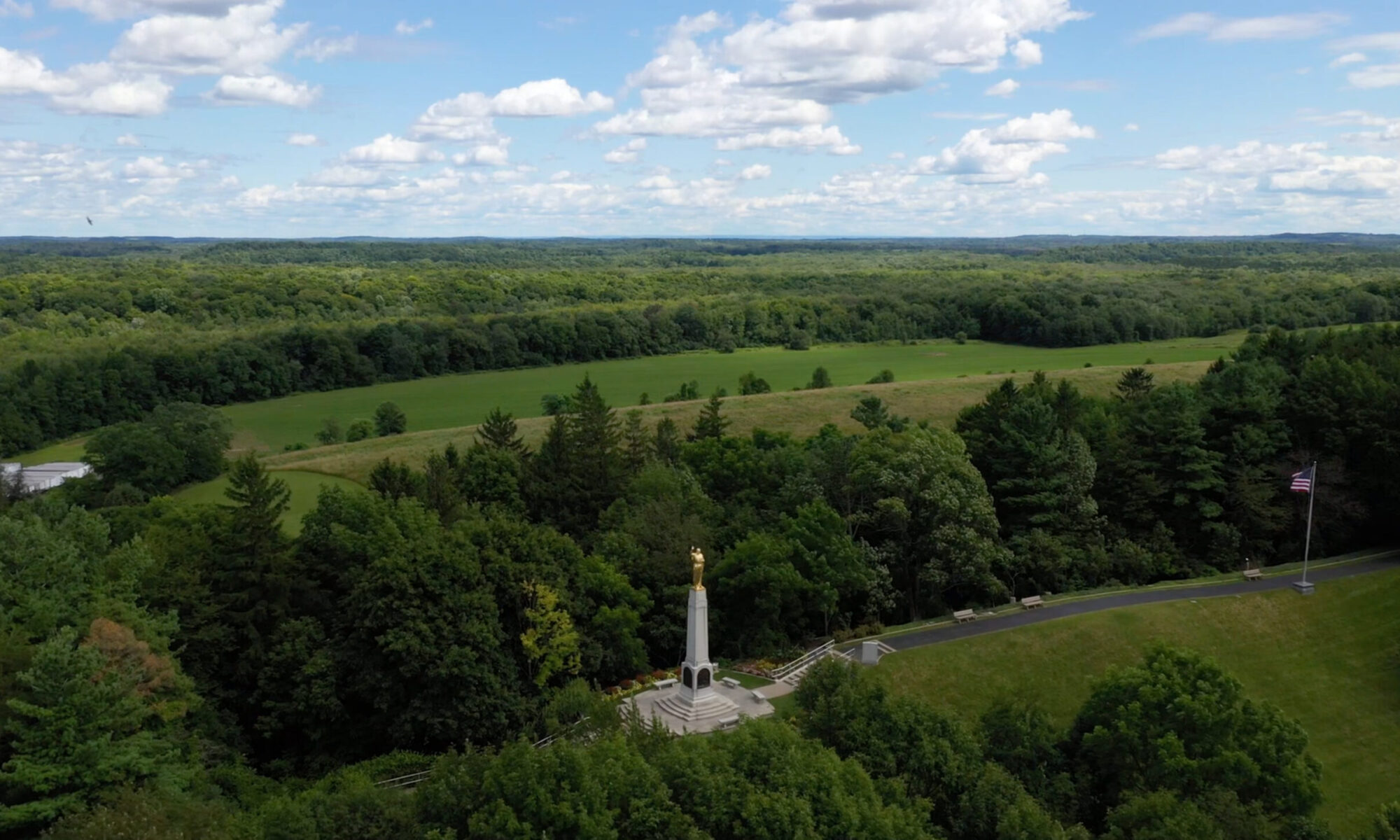The Mysteries of Palmyra:
The 1800s and the Lost 116 Pages
Course Preface:
The experiences of Joseph Smith in the Palmyra/Manchester area of western New York have never been told in context. Gospel teachers speak of the Smith family and Martin Harris as if they were the only inhabitants in town even though the census of Palmyra in 1820 lists 2,719 residents.
Unfortunately, they tell of the First Vision, angel Moroni’s visitations, and the coming forth of the Book of Mormon in a setting of unnamed persons. In so doing, they unwittingly create questions of validity and reveal poor scholarship. Joseph Smith was aware of others in town for he wrote of men in high standing taking notice of him and pf preachers crying “Lo, here. Lo, there.” Where is the scholar that can name the men of high standing and preachers, what they profess, and even plausible suspects for taking the 116 page manuscript?
Church historian Susan Easton Black has spent the last six years combing extant records to add anecdotal information about those residing in Palmyra in 1820 to give context to Joseph Smith experiences.
This website and course and will greatly benefit teachers and learners, believers and unbelievers, to better understand Joseph’s experiences in the Palmyra/Manchester area.
The Integrative Pedagogical Approach was used to provide teachers and learners with an environment to can make connections between what they already know about Joseph Smith in Palmyra with new information to broaden the scope of their knowledge. Teachers and learners can now focus on specific connections between different bits of information, rather than view the well-known facts in a vacuum. The specific objective in using this approach is to gain a broader understanding of Joseph Smith in Palmyra by linking bits of related information which will help teachers and learners stay engaged in a topic they have known for years.
Also used was the Inquiry-Based Approach to encourage teachers and learners to engage in exploration and investigation. By using this approach, questions presented and scenarios given require critical thinking to answer such as questions as who were the men of high standing in Palmyra, who persecuted young Joseph, and who took the 116 pages from Martin Harris.
Course Description:
This course explores the rich history of Palmyra, New York, in the 1800s, with a focus on the intriguing story of the Lost 116 pages of the Book of Mormon. Through a blend of historical analysis, primary sources, and engaging multimedia resources, students will delve into the cultural, religious, and societal aspects of Palmyra during this fascinating period.
Learning Methodologies:
- Interactive Lectures: Engage with multimedia presentations and live discussions.
- Primary Source Analysis: Study documents, letters, and other artifacts from the 1800s.
- Group Projects: Collaborate on research projects that explore specific aspects of Palmyra’s history.
- Field Studies: Virtual or physical visits to relevant historical sites, when possible.
- Reflective Writing: Foster critical thinking through journals and essays.
Learning Outcomes:
- Understand the Historical Context: Gain a comprehensive understanding of Palmyra’s societal, cultural, and religious landscape in the 1800s.
- Analyze Primary Sources: Develop skills in analyzing historical documents and artifacts to better understand the past.
- Critical Thinking: Evaluate historical narratives and their impact on present-day perspectives.
- Collaborative Research: Work effectively in teams to conduct research and present findings.
- Communicate Historically: Enhance ability to articulate historical insights through written and oral presentations.
Course Modules:
Module 1: Introduction to Palmyra and the 1800s
- Overview of Palmyra
- The social, political, and religious climate
Module 2: The Early Life of Joseph Smith and the Book of Mormon
- Joseph Smith’s early years
- The discovery of the Golden Plates
Module 3: The Lost 116 Pages: A Historical Mystery
- The story of the lost manuscript
- The implications of the loss
Module 4: Daily Life in 1800s Palmyra
- Economic activities and daily routines
- The role of religion and community
Module 5: The Printing Press and Early Publications
- The importance of the printing press in Palmyra
- Examination of early publications, including those by Abner Cole
Module 6: Historical Controversies and Theories
- The debates around the lost pages
- Modern interpretations and theories
Module 7: Legacy and Impact
- The lasting impact of the lost pages on the LDS Church and historical scholarship
- Palmyra’s historical significance today
Assessments:
- Quizzes: Short quizzes at the end of each module.
- Midterm Project: Group presentation on a selected topic related to the course.
- Final Essay: Analytical essay on the implications of the Lost 116 pages.
Required Materials:
- Course textbook Suspect Profiles
- Access to the Palmyra Historical Museum’s digital archives
- Recommended reading list (to be provided)
